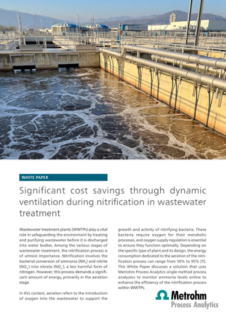Wastewater treatment plants (WWTPs) clean and purify wastewater before releasing it into water bodies, protecting the environment. These plants are the key to addressing the consequences of common water usage in agriculture, industry, and domestic settings, which result in the contamination and accumulation of pollutants.
WWTPs have two main goals: cleaning dirty water and reducing harm to the environment caused by treated water. Among the many processes involved in wastewater treatment, the nitrification step holds particular significance. This step focuses on the conversion of ammonia and nitrite into nitrate, a less harmful form of nitrogen.
The nitrification process requires a lot of energy, especially during the aeration stage. Here, oxygen is introduced to support the growth and activity of nitrifying bacteria. Efficient nitrification ensures the transformation of ammonia into less harmful forms, contributing to the overall effectiveness of wastewater treatment. However, the energy demands of the aeration stage pose a challenge to the sustainability of WWTPs. To address this, a promising approach involves dynamically regulating the aeration system based on real-time ammonia concentrations.
